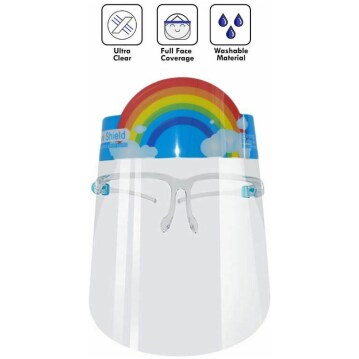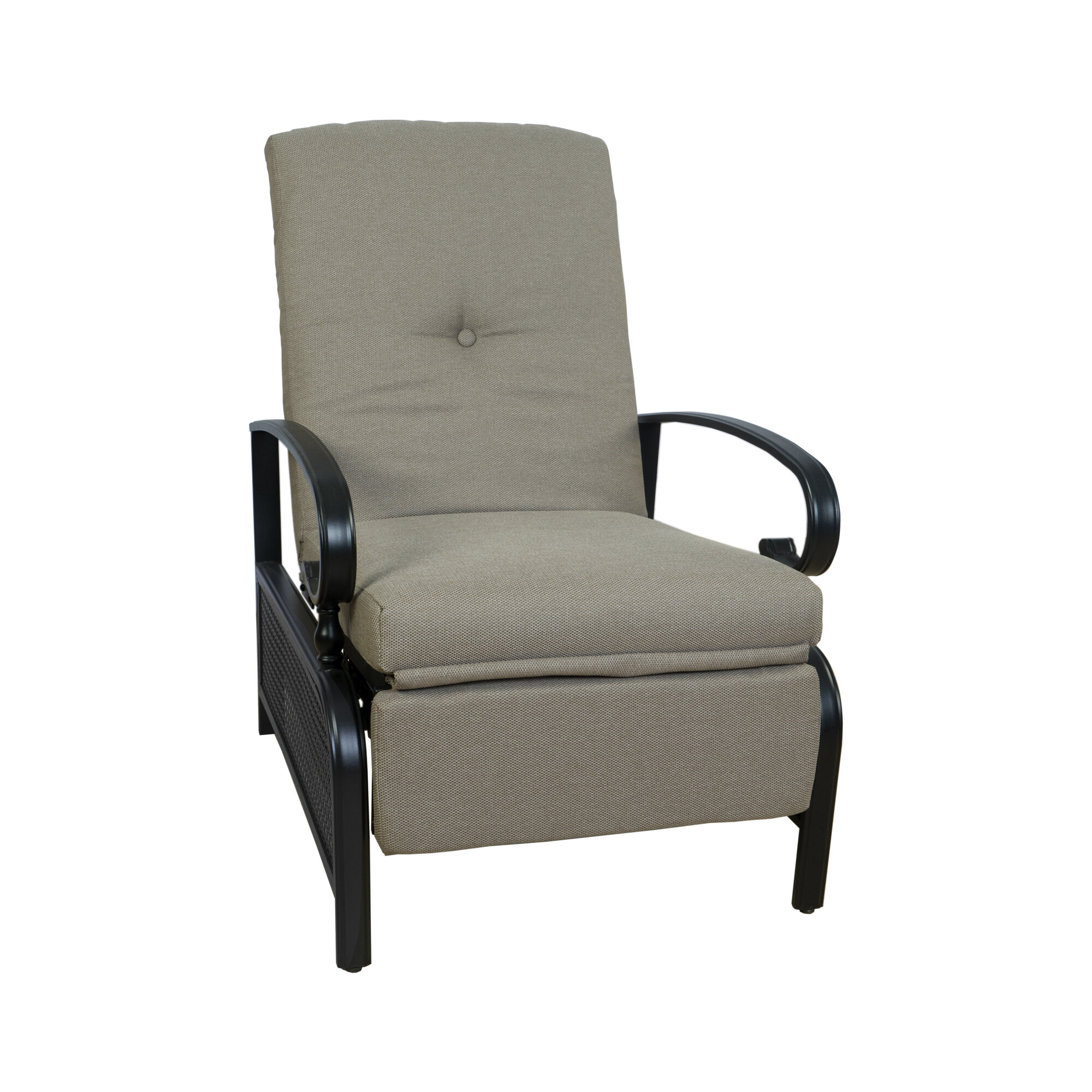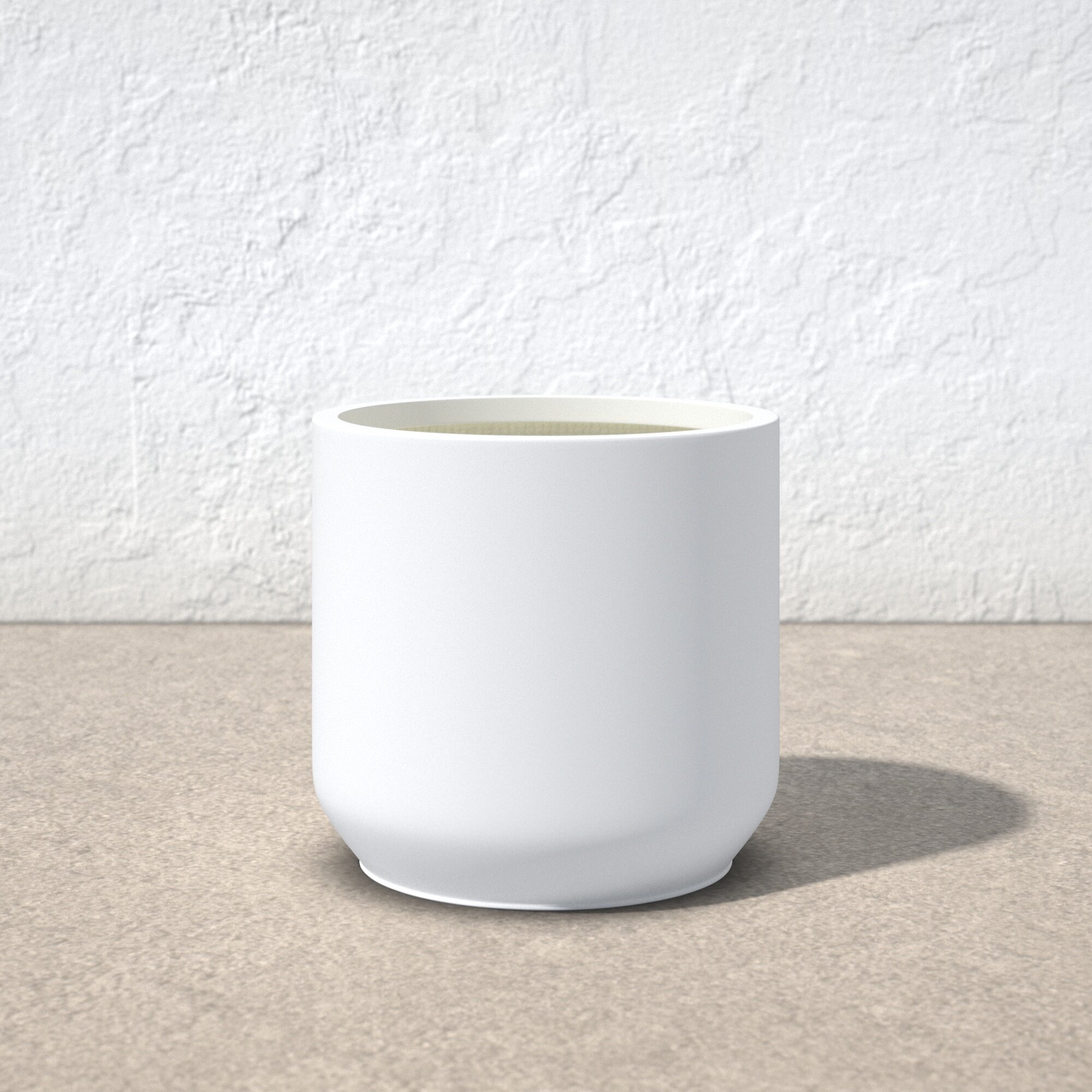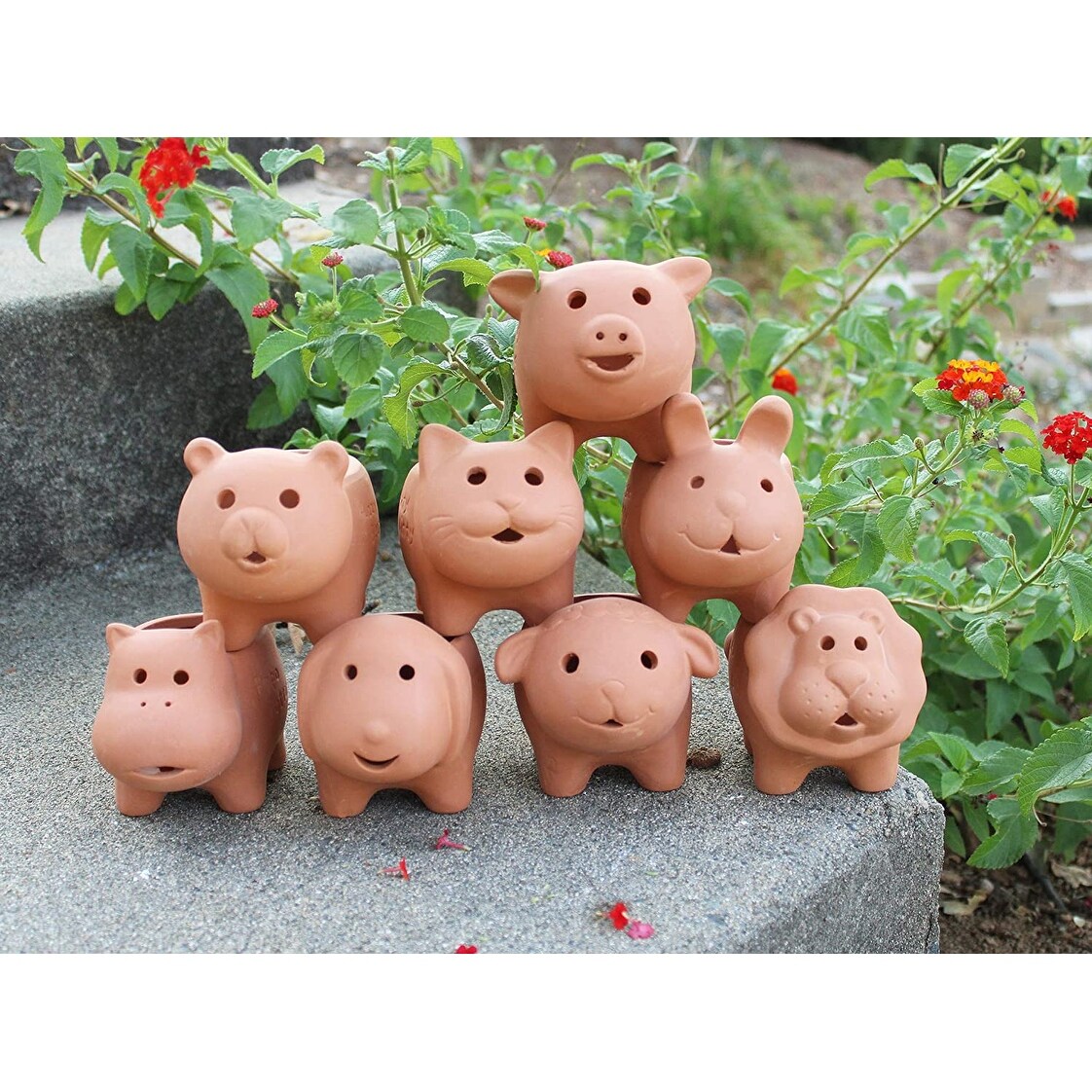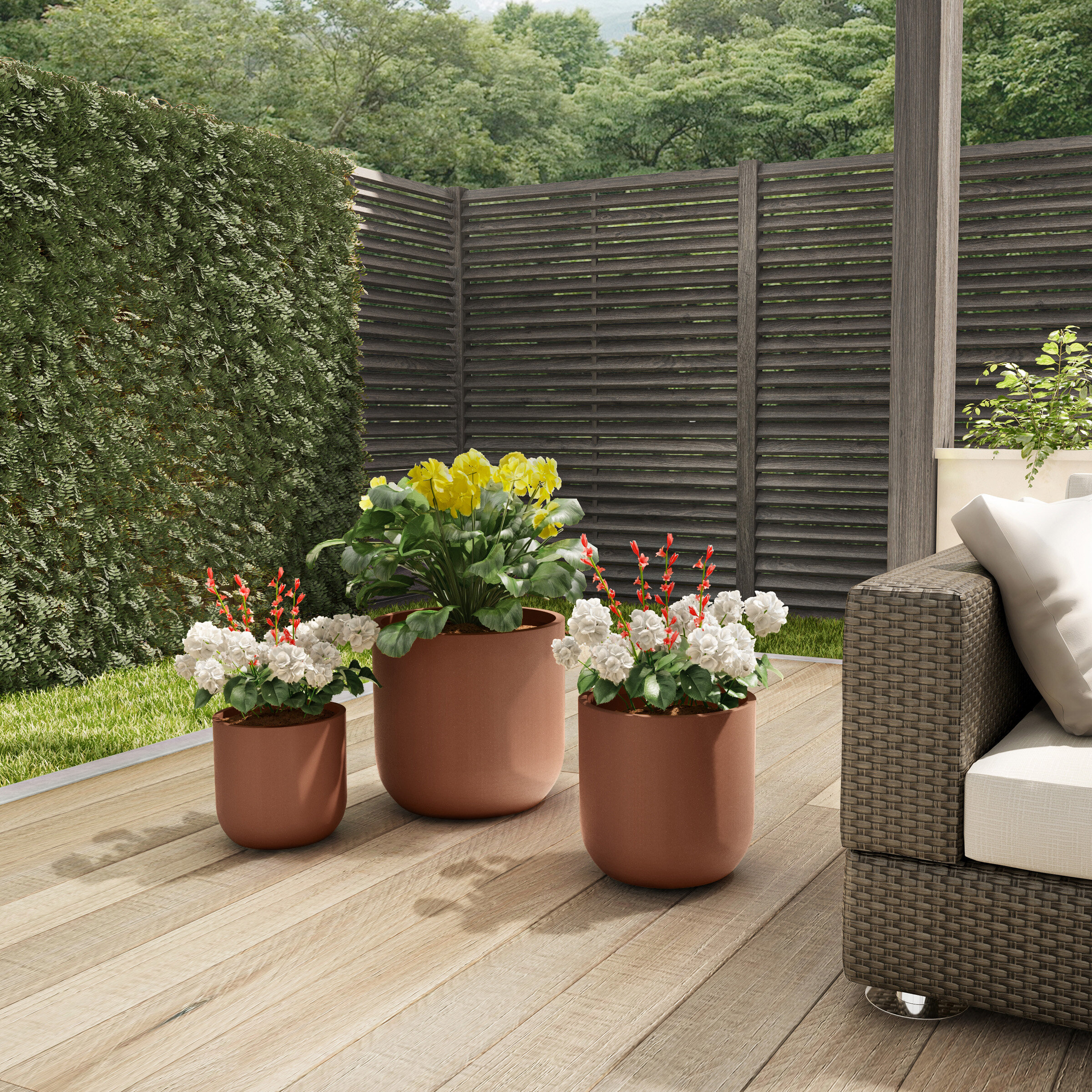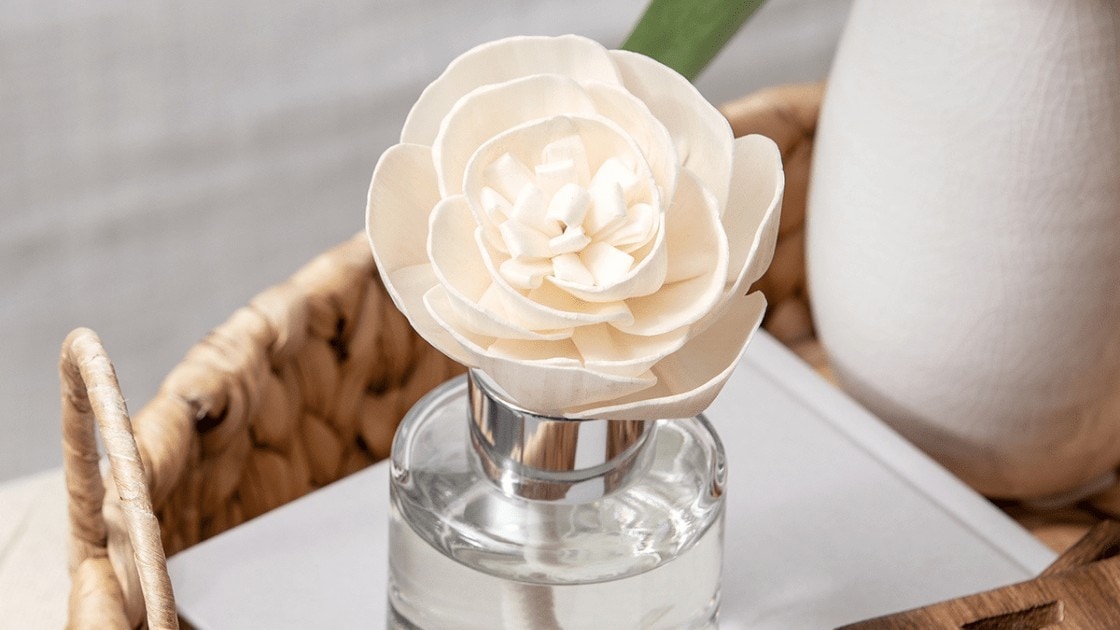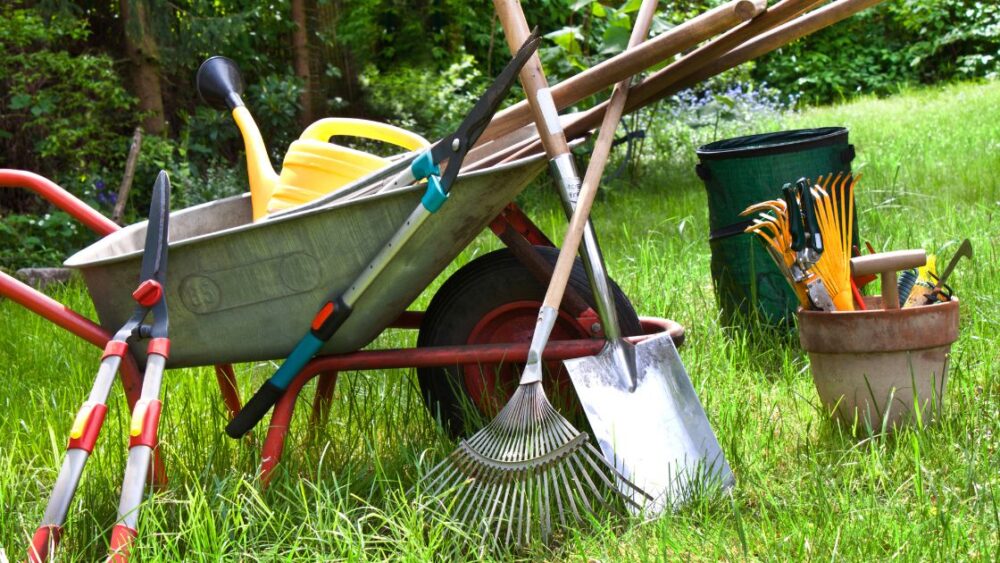
There are many different sizes and styles available for terracotta pots; you can even make your own using this slip-casting method. They can usually be found at garden centers or hardware stores, but keep in mind that buying them new means you do not know exactly how old they are or where they came from. If you decide to take the second route, you must know a little bit about what could be growing inside them before purchasing.
As with any container, plant planted in terracotta pots must be periodically watered and fertilized to ensure indoor health. Some advantages and disadvantages are associated with using this type of material as a potting container as explained below.
Advantages of Terracotta Plant Pots
As with all plant pots, each material has it advantages. As for these specific pots, here are a few reasons why they are so popular and widely used as described below:
Browse our Affiliate Products
Durability
The primary advantage of terracotta over other porous materials is that it will not crack. It can be used to hold water for a long time. Therefore, terracotta pots are often the best choice for growing plants in areas with rough weather or strong winds. This means they can last a very long time and provide convenient storage while maintaining their durability during inclement conditions.
Easy Maintenance
Well-made terracotta plant pots are also easy to clean because they do not become stained easily since water cannot seep through them. They do not harbor any microbes or bacteria, so molding insects are less likely to live on them than on other types of pots. This means they require little maintenance and can be used for the same plants over the long term since any microbes or insects will not invade them.
Better Soil Drainage
Terracotta plant pots also allow for better drainage of soil than other pots because they are porous and absorb excess water very well. They can provide an even water supply that is both moist and at a suitable temperature, making them ideal for growing all sorts of plants in areas where their needs may vary greatly depending on the time of year.
The porous material also helps to evaporate some moisture so it doesn’t become too wet inside and create poor conditions for plant growth.
If your wondering about drainage hole, check out this article. Is One Drainage Hole Enough for Flower Pots? How Big Should It Be?
Low Cost
terracotta plant pots are usually very affordable, especially in large sizes. This means they can be used for all sorts of outdoor gardening and landscaping projects that require various plants without worrying about the cost since they are so inexpensive. Because of this, terracotta is often chosen as the material for decorative planters because they look good with many types of plants inside them.
Visual Appeal
Terracotta is also attractive on its own as a material that resists cracking or other physical damage over time. It, therefore, makes an excellent choice for use in areas where there may be strong winds or harsh weather conditions. The plant pots will still look good after many seasons even if they aren’t cleaned regularly due to their visual appeal.
Do Most Plants Thrive in Terracotta Pots?
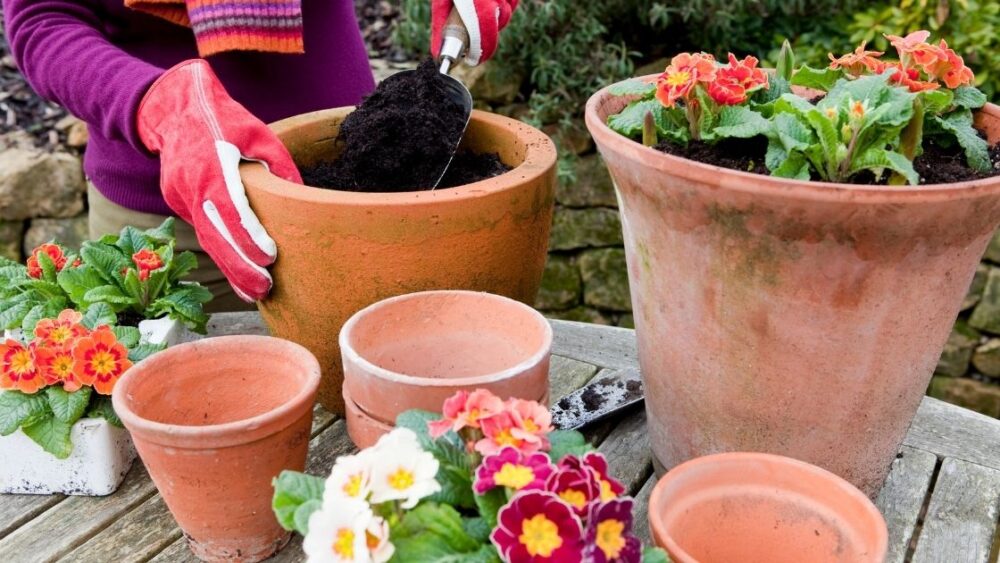
In containers, plants thrive. In pots, they seem to be happier still. However, it is not always the case that terracotta is the best choice for all containerized plants. In general, though, terracotta does have a positive effect on plant life in the following ways:
- Terracotta pots can help the soil retain moisture longer than other materials like plastic or metal. If you water frequently and do not regulate how much water is in the pot, this means that your plants might be overwatered if they are in terracotta.
- The porous nature of terracotta allows airflow through the soil, which prevents root rot and disease.
- Terracotta absorbs heat in its surroundings, which can help in colder climates when the plant is dormant or a cool climate plant that doesn’t need too much heat.
- In general, terracotta pots are very aesthetically pleasing to look at and add a certain character to your garden or home that other materials don’t bring. Another benefit of this is that your containers will not become eyesores if they have been left outside during the winter months without being brought inside for the winter.
For more information on different pots, check out this article. What is the perfect pot for my plants?
Disadvantages of Terracotta Plant Pots
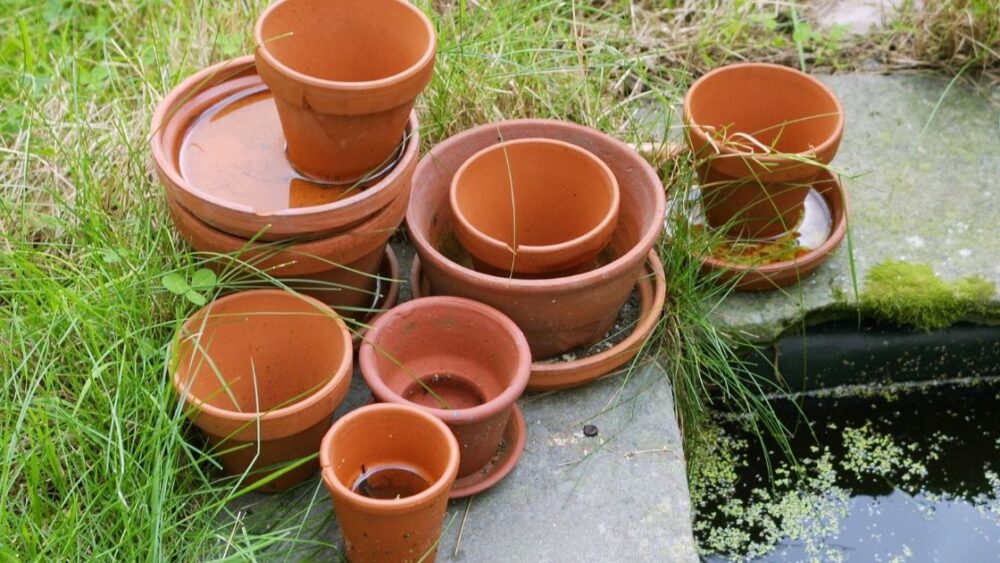
As with all materials, there are limitations of usage. Although they are appeasing and extremely durable, they do have some drawbacks and should be taken into consideration. Most often, it comes down to water requirements.
Terracotta Plant Pots Underwater
When full of water, terracotta becomes heavy and can often cause problems if it gets too wet or a leaking tap. This means that the pot needs to be moved to an area where the ground drains properly after watering;
otherwise, it could lead to puddles forming on your patio or in your home. For example, there are always leaks at these valves with our outdoor faucets. If you don’t have another place to move your terra cotta pot where they won’t cause damage by making a mess, you need to pull the hose out too when watering, so it doesn’t get wet.
Terracotta Plant Pots Get Leggy
Another problem with terracotta is because of the material’s porous nature. It allows water to evaporate through its walls which can cause leggy plants. This might not sound like a huge issue, but if you’re trying to grow your favorites, this can ruin them in just one season by making them weak and little more than sticks.
Terracotta Plant Pots Break Easily
One other negative side-effect of terracotta plant pots is that they are far more breakable than other materials such as plastic or clay. There is an inherent fragility in the pot’s composition, and they need to be moved around carefully not to crack them.
If your looking for more information on plastic pots, click here. Pros and Cons of Plastic Flower Pots and Planters
Which Plant Don’t Do Well in Terracotta Plant Pots?
Although this is a list is short, it is always best to check with your local plant supplier on what type of pot material should be used. While most plants do well in terracotta pots, it always a good idea to plan what you want to plant. Last thing you want are dying plants, and a pot that is to heavy to move around.
As with all potted plants, they all need some type of watering schedule. For more information on water, click here. How Often Should I Water my Indoor Plants/Outdoor Potted Plants?
Lilacs
While lilac plants are among the most popular, they don’t do well in terracotta plant pots. Lilacs have a shallow root system that doesn’t grow down into the pot’s soil. They anchor their roots at or just below the soil surface, depending on how much water is available.
If you put a lilac in a terracotta pot, not only will it dry out more quickly than if it were growing in another type of container, but its poor root system won’t be able to provide ample amounts of water and nutrients where they’re needed.
Rather than spending your money on a new planter every spring after the lilacs die from inadequate watering during the summer months, try putting them in a roomier container that will give their roots plenty of room to grow.
English ivy
English ivy is one of the most popular hanging plants around, but it isn’t suitable for growing in terracotta pots. While they can tolerate rapidly draining soil conditions, they still need adequate water.
Suppose you put an English Ivy in a terracotta pot. In that case, its shallow root system is likely to dry out before the plant can absorb enough water–especially if you’re one of those people who overwater your houseplants (which is bad for them).
Additionally, since English Ivies originate from the humid climates of Southeast Asia and Africa, they don’t do well in dry air. Keep them moist by misting them with water every day or so, but never allow the soil to become soggy.
Sago palm
Another popular indoor plant is the Sago Palm. However, if you put a Sago in a terracotta pot, it will have a very slow growth rate because of its shallow root system and inability to retain moisture.
After all, they come from arid regions where they’re used to long dry spells between rains! Remember that while some plants can adapt well to container life, others do better in their natural habitats–and it’s wise not to force them into lifestyles that aren’t suited for them. If you want one of these unique plants in the house, choose a different type of container.
Oak leaf hydrangea
Any pot can be used for growing oak leaf hydrangeas, but terracotta isn’t one of them! Terracotta doesn’t allow enough air circulation around the roots, and it also dries out quickly. These are bad for oak leaf hydrangeas, which prefer moist soil conditions and good airflow despite their shallow root systems.
If your pot holds moisture too long (due to slow drainage), it can lead to root rot, while if the soil dries out too quickly, it will stunt the growth of the plant’s roots–which will, in turn, affect how fast it grows up above ground.
Final Thoughts
Most people would think that the most important part of a plant pot is holding soil and providing drainage. However, if you look at all the pros and cons, then perhaps they might be wrong! Terracotta plant pots offer so much more than basic functionality – so consider getting one if you haven’t already. They are incredibly versatile and ensure your plants thrive and grow to their maximum potential.
